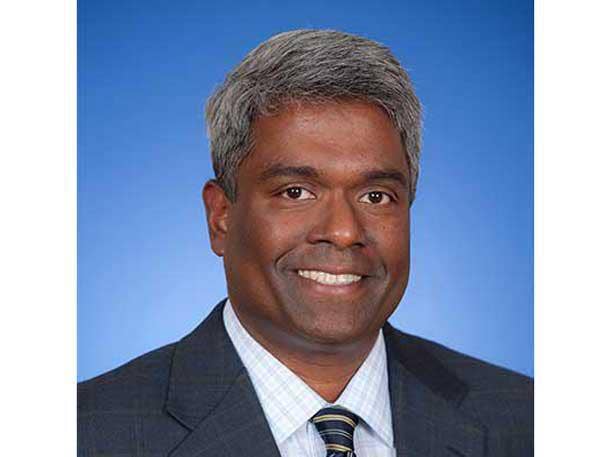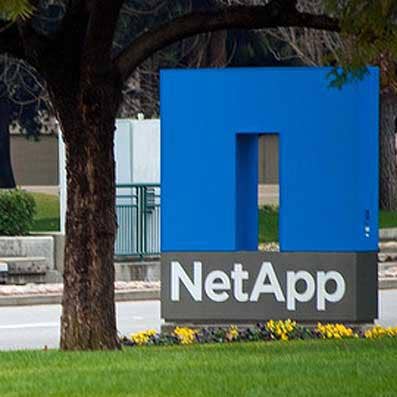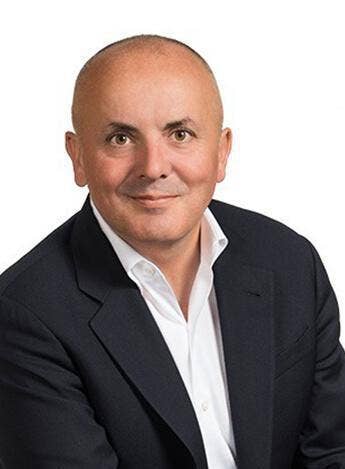NetApp CEO George Kurian: Pure Storage Boss’ Comments Inaccurate
‘We‘re not going to comment on someone else. But we are going to clarify. When somebody comments inaccurately about our results or our approach or our technology, we feel obligated to make sure that there is real clarity on the facts,’ says NetApp CEO George Kurian.

Stake In The Ground
Charles Giancarlo, CEO of Pure Storage, told CRN in an exclusive interview published on July 15 that top storage rivals such as NetApp, Hewlett Packard Enterprise, and Dell Technologies are not providers of “true cloud storage.” He backed up his assertion by saying those technologies are little more than subscription models or leasing options based on their legacy storage hardware rather than modern ways to deal with data management in a true cloud-like fashion. In particular, Giancarlo said rival NetApp requires customers to use NetApp’s own hardware on the cloud, compared to Pure Storage’s extensive use of APIs to manage data wherever it is located.
Giancarlo’s comments did not sit well with NetApp and its CEO George Kurian, who last week told CRN his company felt the need to clarify NetApp’s approach to storage and the market and provide some “factual data points” that address some of his rival’s assertions.
“Broadly speaking, there were comments about our innovation agenda, our ranking in the flash storage market, our focus, none of which are accurate,” Kurian said.
Kurian laid out five points about which he said “did not provide the right degree of clarity and honesty about our kind of capabilities.” Those five points, according to Kurian, were Pure Storage’s assertion that it is the only company to provide cloud-like APIs, that NetApp hardware was required for running NetApp services in public clouds, that only Pure Storage offers tier-two storage, Pure Storage’s market position, and Giancarlo’s assertion that his competitors treat storage as a commodity technology.
Kurian responded to all five points. But he also took time to talk about the recent departure of Anthony Lye, who had led NetApp’s move into a wider range of cloud management technologies, as well as his hopes for a smooth merger between Broadcom and longtime partner VMware.

So you saw Pure Storage CEO Charles Giancarlo’s comments about NetApp?
Over the last few weeks, we’ve seen people commenting about our approach to the market, our position in the market, and we wanted to clarify a few things about our approach, and just provide some factual data points that address some of the assertions made. And I’ll just leave it there. We‘re not going to comment on someone else. But we are going to clarify. When somebody comments inaccurately about our results or our approach or our technology, we feel obligated to make sure that there is real clarity on the facts.
So what did NetApp see in Giancarlo’s comments as inaccurate?
So there were several assertions. Broadly speaking, there were comments about our innovation agenda, our ranking in the flash storage market, our focus, none of which are accurate. I can give you a point-by-point clarification of the assertions made, and then maybe talk a little bit about it.
Listen, we have a 30-year track record of innovation and advancement of our technology. We have unquestioned leadership in the cloud, as third parties will indicate in their reviews of our offerings. And we‘re focused on our agenda, which is to help our clients succeed in their digital transformation agendas and to build and deploy hybrid multi-cloud architectures. On the specifics, I think there were five areas that we felt did not provide the right degree of clarity and honesty about our kind of capabilities.

What five areas?
The first was, Charles indicated that Pure is the only pro storage provider to offer storage services through cloud-like APIs. And he stated that NetApp doesn‘t do that at all, quote, unquote. The fact is that NetApp has provided extensive cloud-like APIs across our software stack on prem and in the cloud since 2018. You can go verify that.
The second is this statement that NetApp storage in Azure and AWS is only available on NetApp hardware. And that‘s simply inaccurate. NetApp storage software is fully cloud-native, and runs directly on the cloud provider hardware in Azure, AWS, and Google. Non-NetApp hardware, cloud provider hardware, you can again go and verify that those offerings are available in the cloud provider marketplaces and in some of those cloud providers as native services as well.
Third, there‘s a claim that Pure is the only vendor with a product for tier-two storage. NetApp provides a more complete set of options for tier-two storage by offering hybrid disk and flash options, hard drive only options, and QLC-based flash options, as well as being able to directly leverage object and cloud storage as an integrated transparent second tier of storage. So we can address the full lifecycle of tier-two storage, whether it is for primary use cases, whether it’s for archival use cases, or whether the secondary tier is a core data tier behind the high performance flash tier. And I don‘t think that it’s an accurate assumption to say that Pure is the only vendor with a product for tier-two storage.
The fourth one, when asked about revenue market share, is an assertion that Pure is, quote, way up there at number one, or number two, unquote. According to recent numbers, published by Gartner and IDC, Pure sits at number three in the flash storage market behind Dell and NetApp. There‘s also a claim that all of Pure’s competitors treat storage as a commodity, and spend less than 5 percent of their revenue on R&D. NetApp spent $881 million, or almost 14 percent, of revenues on R&D in FY22, it’s all public data, in addition to our multiple technology acquisitions. We have a 30-year track record of proven innovation in storage and data management. We have stepped far ahead of our traditional storage competitors, including Pure, to take advantage of the cloud wave. We were first to it, and we recognize that others will probably try to copy us and chase us into that market. But there is no question that we have a clear lead in solutions for hybrid multi cloud. In fact, if you look at GigaOm, a respected independent third party, they have rated us a clear leader in hybrid cloud storage, in cloud file systems, and in enterprise storage. And we want to make sure that your readers and our customers know the facts about the positions in the market. I think it‘s unfortunate that we and others of our competitors are constantly being misrepresented by this one company. And you know, my feedback to your readers is, you have to verify the facts, and honestly question whether someone who makes such blatant misrepresentations of the facts is a trusted provider of technology to you.
The data that we are providing about market share comes from independent respected third-party vendor analysts. Our financial statements are clearly auditable in the market. And so we‘re just pointing out the facts. And listen, I feel obligated to talk about our roadmap and our position in the market. And that’s where I‘m focused. It’s my job to make sure that customers understand our differentiation, which is, we have a 30-year track record of proven innovation in data management. We have brought to our customers constant innovation in our core operating systems so that an investment they have made in our operating system has carried them through generations of technologies and given them significantly more value. A single new version of our operating system, for example, (has) increased performance on the same system by up to 40 percent. That‘s a huge value when you look at system and workload consolidation and data center economics. We have given the customers that have invested in learning our technology the opportunity to modernize and extend their data centers to the cloud, migrate and run applications on the cloud, connect and activate data across environments so that it’s not just in your data center but increasingly in a networked enterprise, across data center, cloud, edge, and colocation environments. We give you the tools beyond storage to monitor and secure hybrid clouds, data, and infrastructure with a very differentiated data security and governance offering. And finally, we give you with our cloud ops portfolio the ability to optimize and automate public cloud operations so that you can essentially deploy and automate the management of a large number of applications on the public cloud.
We‘re paying attention to our customers, on what they want from their technology providers, and what challenges they are looking to solve. We respect all of our competition. We are proud of our innovation agenda, and we are going to defend it. If someone misrepresents our position in the market or our technology capability, we’re going to defend it, and we‘re going to defend it vigorously. And that’s the only reason for the call today.

So what did you think about Giancarlo’s comments on HPE and Dell?
Listen, we respect all of our competitors. Everyone has a different strategy. I would rather that they talk about their strategy, and we talk about ours. And I think there are different approaches to the market. I think that we believe in our approach, but we don‘t think there’s a single approach to customers. There are various customers with different needs. We welcome the competition. We respect the competition.
You just said you prefer to talk about the NetApp roadmap. Can you talk about what we can expect through the rest of this year and into the next year?
We are excited at the data-driven digital economy. We see that the ability to store, analyze, and get insights from data is the cornerstone of modern organizations. Whether it‘s in healthcare, serving citizens, whether it’s in the government to help bring services and knowledge to the citizens in a democracy, and whether it‘s any business, we feel that data driven business is the future of the world. And we approach it broadly. You know, we are excited about our Data Explorers program which is a kind of community and philanthropic project where we are investing in enabling middle school and high school students to understand the importance of data and how to analyze it. And then certainly, with industry leaders, the hyperscalers, with players like Nvidia and others, to build solutions that help customers use data and deploy applications that consume data efficiently and capably not only in their data centers but also across all the multiple clouds.
You‘ve seen us innovate in cloud storage. We have an accelerating and really good agenda with cloud data services that provide customers insights into who is accessing their data, ways to protect and bring the security that they have historically had in a proprietary data center now into the public clouds, and a growing portfolio of cloud operations capabilities that help customers not just deploy storage, but also the entire elements of an application infrastructure successfully, efficiently, and continuously optimized on all the leading public clouds. And so this gives us the ability to help our clients deploy the applications and manage the data that runs their digital businesses on any public cloud or in their data center best.

Anthony Lye, who led NetApp’s move into the cloud managementportion of the business, just left NetApp to go to Palantir. What does this departure mean for NetApp? And what are your plans in terms of going forward with this role?
I think Anthony did exceptional work for NetApp. We wish him nothing but the best. He worked with me closely for five-plus years. And during that time, he has built a strong team of cloud-knowledgeable leaders, both organically and inorganically. Plus, we have added a strong set of leaders at the CEO team level that came from cloud backgrounds, like [NetApp President] Cesar Cernuda, [Executive Vice President and Chief Product Officer] Harvinder Bhela, and others. So I feel very good about the depth and the capability of cloud now in the NetApp team, and the leadership team, and we will continue to strengthen our team as we see fit.
NetApp has been a close partner of VMware. Do you see any changes in how the company might work with VMware as VMware becomes part of Broadcom?
Listen, it‘s too early to comment. The transaction hasn’t closed yet. We have really good work going on with VMware, and we thank [VMware CEO] Raghu [Raghuram] and his team for their partnership. We are extending the work we‘re doing not only in the data center, but also to VMware implementations on the public clouds. And I’m excited about the work that we‘re doing there and look forward to continuing to solve problems for customers. VMware is present in a huge number of customers. And it’s important that we and they work closely together to continue to bring value to our joint customers.